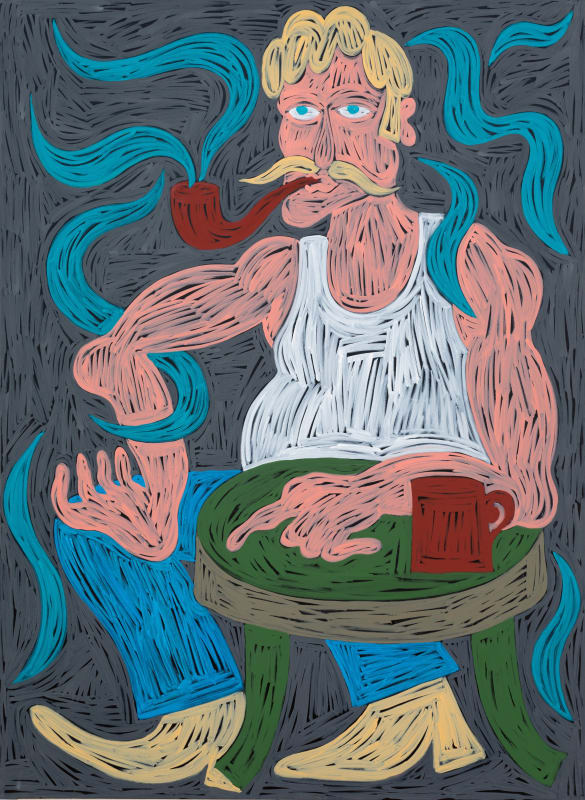Cooke Latham Gallery and PATERSON ZEVI are delighted to announce Rade Petrasevic: PLEASE DON'T BOTHER ME. This marks the first exhibition of the Bosnian-Austrian artist at Cooke Latham's London space, as well as the first collaboration between the two galleries. The exhibition brings together a selection of dynamic and witty new oil paintings that explore the historicised concept of the artist's studio. Petrasevic examines the relationship between artist and sitter and the identity of the painter as maker (as evidenced by their tools and materials).
At the core of the exhibition are paintings of models posing for a group of artists. In a dialogue with each other on opposite walls, both the artists and their subjects are contorted into impossible positions, simultaneously revealing and hiding themselves from the viewer. Petrasevic challenges the traditionally passive role of the artist's model by giving each character in his paintings a monumental and sculptural quality, filling each canvas with a tension between intimacy and resistance. Deliberately androgynous, Petrasevic's male models are characterised by white gloves or cowboy boots, a recurring motif. The paintings are also rooted within a classical tradition. In particular, the pose and title of I DON'T KNOW MAN recalls Albrecht Durer's Melancolia engraving or Rodin's iconic 20th century sculpture The Thinker. Both are poses of deep contemplation, where models grapple with life's existential questions.
Petrasevic's artist subjects are identified by their tools. Paintbrushes, turpentine and canvases in progress fill these backgrounds, alongside the coffee cups and cigarettes which are often found in Petrasevic's own studio in Vienna. DON'T JUDGE ME references Viennese café culture, an important part of the city's famed artistic heritage, where traditional coffee houses and bars serve as meeting places for the exchange of ideas. These spaces, established in the 18th Century, are still an important axis for artists working in Vienna today. It is in cafes and bars that Petrasevic observes and finds inspiration both for his narratives and compositions. Moreover, while the artist's technique and application of paint is spontaneous and fast-paced, it can take weeks or months before he begins transferring ideas from sketches to full sized canvas. As the artist says: 'I spend most of my studio-time sitting on a chair and looking at a painting with a stupid amount of determination. This process can take anything from a few hours to some months.'
Petrasevic's still-life paintings depict objects related to the characters' everyday lives: food, ashtrays, coffee cups, cigarettes, wine glasses, paint, paintbrushes and turpentine. It is often in the still-lifes that the artist's signature brushstrokes - flat, expressive and reminiscent of marker pen on paper - are most evident. Petrasevic started painting with graphic lines in 2014 to exaggerate the two-dimensionality in his work. These lines are paired with a bold but selective colour palette where condensed shapes form classically-inspired compositions.

